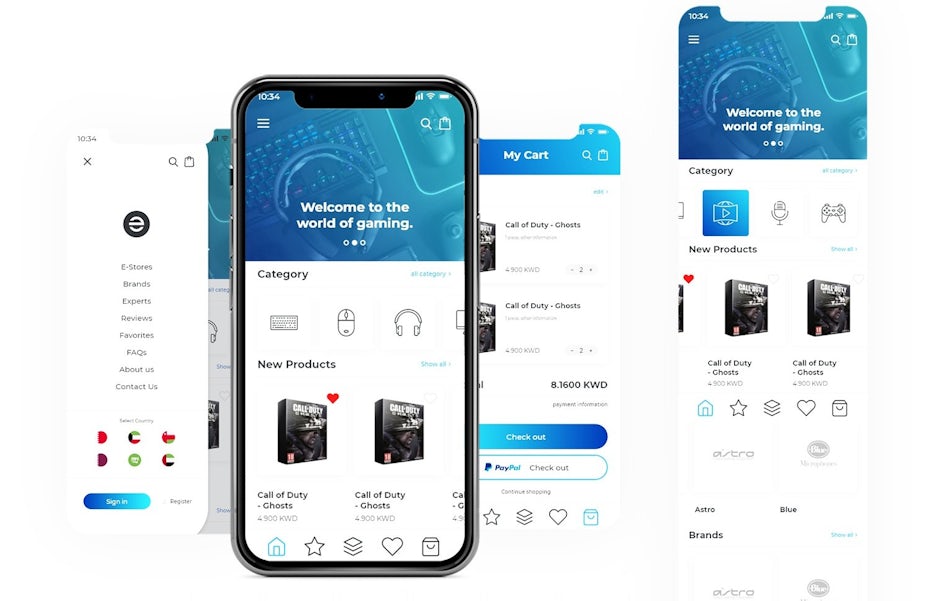Drive Web Traffic and Conversions with Customized Mobile Optimization Solutions
Drive Web Traffic and Conversions with Customized Mobile Optimization Solutions
Blog Article

The Ultimate Guide to Mobile Optimization: Strategies for Enhancing Website Performance on Smartphones and Tablets
The techniques for improving site efficiency on mobile platforms go past simple adjustment; they include a detailed approach that includes receptive design, speed optimization, content approaches, and user experience enhancements. By delving into the complexities of mobile optimization, services can not only meet customer expectations yet also stay ahead in a competitive digital landscape.
Relevance of Mobile Optimization
Mobile optimization plays a critical function in enhancing customer experience and driving conversion prices in the ever-evolving electronic landscape. With the increasing use smart devices and tablets for surfing the internet, guaranteeing that internet sites are enhanced for smart phones has come to be essential for businesses - Mobile Optimization. A mobile-optimized site not only adjusts effortlessly to various screen sizes however additionally tons rapidly, providing individuals with a smooth and delightful surfing experience
In today's busy globe, users anticipate instantaneous access to information on the move. An internet site that is not optimized for mobile gadgets risks losing prospective consumers as a result of reduce filling times or an inadequate user interface. By investing in mobile optimization, organizations can provide to the needs of their mobile audience, leading to greater involvement and increased conversions.
In addition, internet search engine like Google prioritize mobile-friendly sites in their positions, making mobile optimization necessary for boosting presence and bring in natural traffic. Mobile Optimization. Overall, the value of mobile optimization can not be overemphasized, as it directly influences user complete satisfaction, conversion rates, and general service success in the electronic world
Responsive Design Techniques
Carrying out receptive layout techniques makes certain that web sites dynamically readjust their layout and content based upon the customer's device display size, supplying a consistent customer experience across various systems. Among the most typical methods made use of in receptive layout is creating fluid grids that permit content to resize proportionally to the screen dimension. This ensures that aspects on the page preserve their relative spacing and arrangement, enhancing the watching experience for users on various gadgets.
In addition, using versatile images that can scale with the dimension of the viewport aids protect against photos from being cropped or misshaped on smaller sized displays. CSS media inquiries play a crucial role in receptive style by enabling designers to apply specific designs based on the tool qualities such as screen width, elevation, and alignment. By leveraging media questions, internet sites can adjust their layout and style to suit mobile phones, tablets, and desktop computer screens seamlessly.
Including receptive style strategies not only boosts customer experience however additionally contributes to improved internet search engine positions, as search engines like Google prioritize mobile-friendly websites in their mobile search results. By embracing responsive style, web sites can accommodate the diverse needs of individuals accessing web content on a range of gadgets, ultimately driving interaction and conversions.
Rate and Efficiency Optimization

One trick technique is enhancing images and multimedia material to decrease documents dimensions without endangering quality. Pressing pictures, leveraging contemporary image layouts like WebP, and careless loading offscreen photos are effective methods to speed up tons times (Mobile Optimization). In addition, lessening HTTP demands, leveraging internet browser caching, and lowering server feedback times are important steps in enhancing efficiency.
Implementing a content delivery network (CDN) can also significantly improve internet site rate by distributing web pop over to this site content throughout several web servers internationally, lowering latency for users accessing the website from various places. Focusing on critical above-the-fold material and deferring non-essential manuscripts can additionally improve regarded efficiency. By concentrating on speed and performance optimization, websites can deliver a seamless and enjoyable customer experience on smart phones.
Mobile-Friendly Content Approaches
Mobile-friendly web content approaches involve customizing the discussion of information to match the smaller displays and on-the-go nature of smart device and tablet users. Additionally, breaking up content into shorter paragraphs and making use of bullet factors can help improve readability and make it less complicated for individuals to eat information quickly.
Integrating appealing visuals, such as pictures and videos optimized for mobile viewing, can also improve the total user experience. These visuals need to be appropriate, top quality, and load swiftly to stop individuals from wearying. Incorporating interactive elements like tests, polls, or studies can enhance individual engagement and motivate active participation.
Customer Experience Enhancements
Structure on the structure of mobile-friendly web content methods, improving customer experience requires maximizing every touchpoint to ensure smooth communication and complete satisfaction for mobile users. One essential facet of enhancing user experience on mobile devices is ensuring fast filling times.
In addition to speed and receptive design, simplifying navigation is important for a favorable user experience. Clear and intuitive navigating menus, popular search bars, and purposefully placed call-to-action buttons can help individuals quickly discover what they are looking for on a mobile website. Maximizing types for mobile users by reducing the number of fields and using auto-fill functions can also improve the overall user experience. By concentrating about his on these individual experience improvements, sites can effectively engage and keep mobile site visitors.
Conclusion
To conclude, mobile optimization is essential for boosting site performance on smartphones and tablet computers. By implementing special info receptive style techniques, enhancing speed and efficiency, creating mobile-friendly web content, and boosting customer experience, companies can successfully get to and engage with their mobile audience. It is essential for sites to adapt to the enhancing mobile use patterns in order to continue to be affordable in the electronic landscape.
Report this page